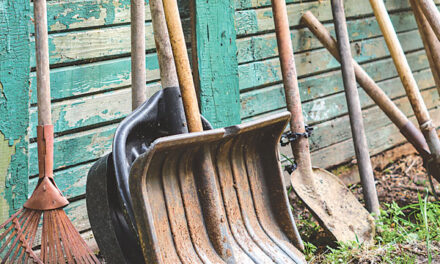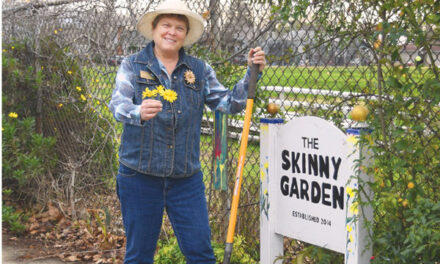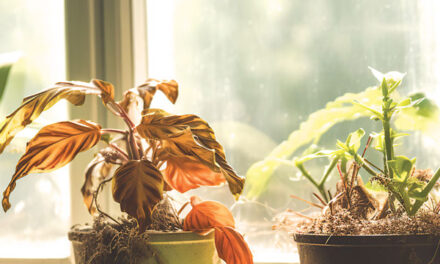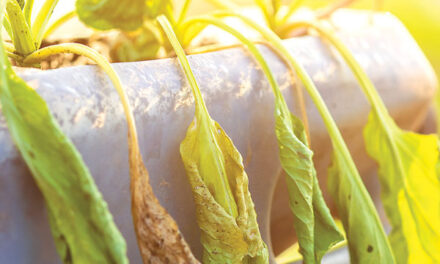Simple bouquets and elaborate floral arrangements are a snip away with a cutting garden, a designated area specifically planted with striking flowers and foliage. The payoff is a color blast for the dining table, kitchen island, even the home office.
Monet, van Gogh and Renoir put brush to canvas and created still-life paintings of flowers in a vase—a universal symbol of love, happiness and good vibes. A Harvard study found flowers in the home instill a sense of happiness and compassion toward others. The gift of a single flower lifts the darkest mood.
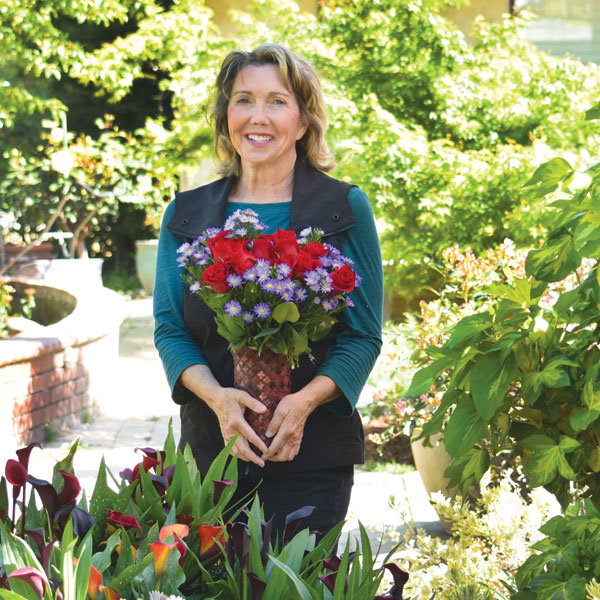
“I share my bouquet arrangements with my yoga studio, my hairdresser’s salon, celebration of life services and my wonderful neighbors, Eric and David,” says Ellie Longanecker, an American Rose Society arrangement judge from Carmichael. “Seeing others enjoying the beauty is just another reason for me to continue working at what I love to do.”
A cutting garden can supply year-round flower needs and ease the dilemma of depleting permanent beds and borders of precious blooms.
“If you’re new to gardening and interested in a cutting garden, it will be more rewarding to choose flowers that last in the garden and the vase,” says Longanecker. She notes Sacramento’s heat is a challenge for gardeners and flowers. Among plant choices that are easy to grow, beautiful and possess staying power, she recommends:
Calla lilies: Odessa and Green Goddess. Hydrangeas: Buttons ’N Bows and Limelight. Roses: Secret, Gemini, Grande Amore, Olympiad, All My Loving, Moonstone, Our Lady of Guadalupe, St. Patrick, Sedona and Flower Girl.
For flower arrangement foliage and filler, she prefers Ming fern, leather leaf fern, flax, fatsia, Indian hawthorn and sago palm.
Seasonal cutting garden groupings will extend the supply of flowers and foliage. For instance, Shasta daisy, sweet peas, sweet William, alstroemeria and calendula for spring bouquets; sunflower, zinnia, black-eyed Susan and euphorbia for summer; chrysanthemum, Mexican bush sage, statice and tuberose in fall; and narcissus, cyclamen, poinsettias and ferns in winter.
Sacramento nurseries and seed catalogs, such as Renee’s Garden, Baker Creek Heirloom and Territorial Seed Company, are excellent plant and seed sources.
Readers interested in upping their flower arrangement game by learning about netting, floral tape, picks, floral frogs, color palettes, and other tools and techniques may want to consider joining the Sacramento Floral Design Guild. The guild meets twice a month, September through May, at the Shepard Garden and Arts Center in McKinley Park. Contact the guild at sacfloraldesignguild.org.
“I most enjoy the satisfaction, the joy of doing something artful and creative,” says Cherry Hoover, president of the Sacramento Floral Design Guild. “There is a lot of pride in doing a nice, creative arrangement.”
A few of Hoover’s flower choices for the vase are lilies, hydrangea, gladiolus, iris and Ming fern.
Snip flowers in early morning with sharp clippers and place stems in a bucket or large vase of water. Do not leave them in sunlight. Before arranging cut flowers, choose a vase, remove all foliage that would be submerged and cut the end of the stem on the diagonal. Immediately place the flowers in a vase with water.
Longanecker adds two tablespoons of sugar or preservatives to the water to prolong the life of the arrangement. No more than half a teaspoon of bleach per quart of water works well too.
Planning and planting a cutting garden is like any other flowerbed. Choose a sunny, well-drained site and amend the soil with compost and slow-release fertilizer. Choose flowers and foliage plants that require similar sun and water requirements. Consider planting seasonal blocks of flowers so spring, summer and fall bloomers are grouped in separate areas. Some winter choices can be grown in containers. Planting in rows makes it easier to tend and harvest.
Then, stand back and wait for happiness to bloom.
Dan Vierria is a University of California Cooperative Extension Master Gardener for Sacramento County. He can be reached at masterg29@gmail.com. For answers to gardening questions, contact UCCE Master Gardeners at (916) 876-5338, email mgsacramento@ucanr.edu. Follow us on Facebook, Twitter and Instagram: @insidesacramento.




